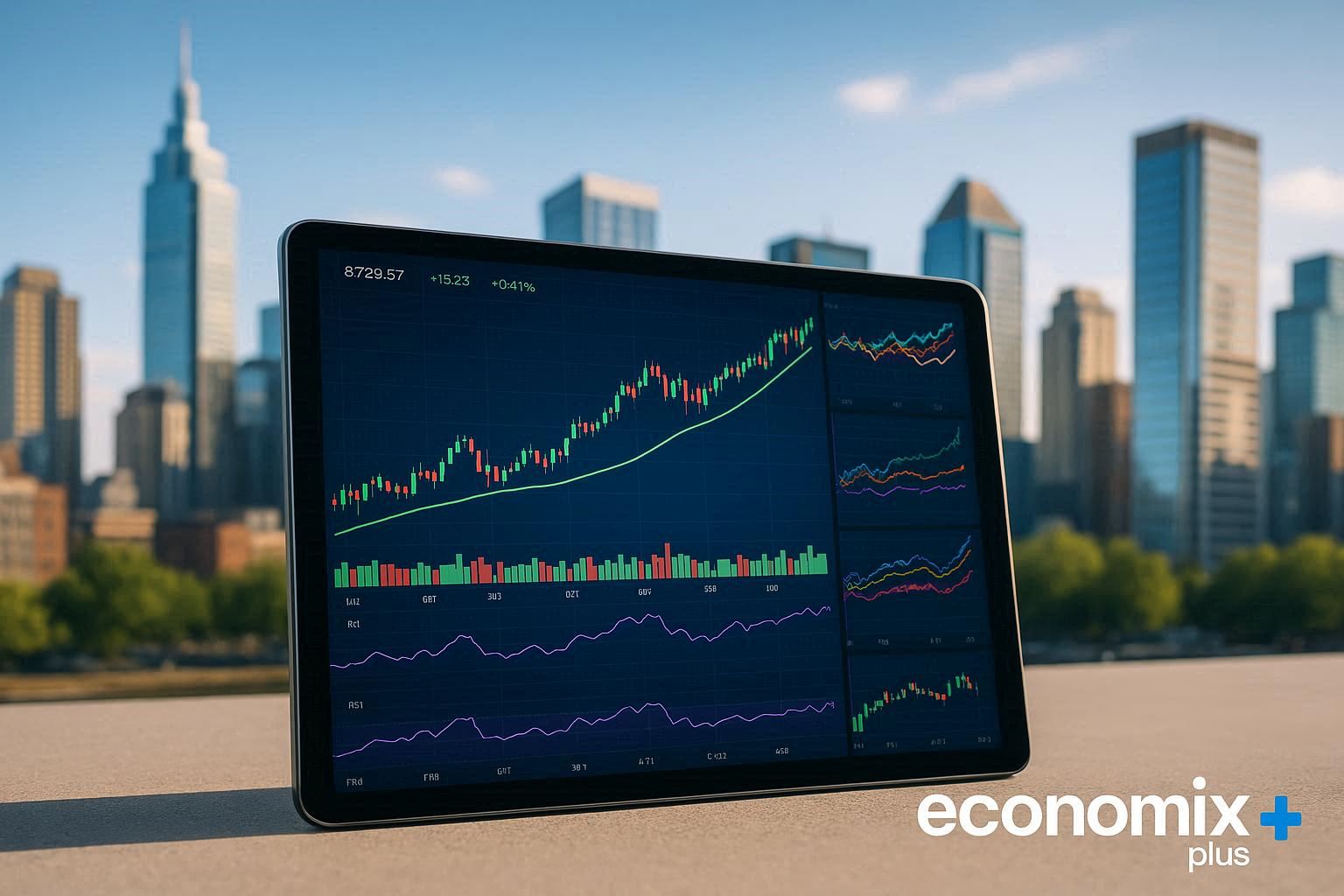Every year, over $500 billion vanishes from healthcare systems worldwide. In developing nations, 84% of citizens report paying bribes for basic medical services. This financial hemorrhage isn’t just about stolen cash – it erodes trust in institutions and perpetuates systemic inequality.
Transparency-focused financing models now emerge as unexpected warriors in this battle. By mandating open audit trails and real-time expenditure tracking, certain nations reduced fund diversion by 37% within three years. These systems create firewalls against graft through mandatory disclosure rules and cross-sector verification protocols.
Recent initiatives across 12 member states demonstrate how accountability measures in resource allocation directly impact service quality. When Mozambique implemented biometric claims processing, counterfeit patient records dropped by 63% in 18 months. Such cases prove financial oversight tools can transform theoretical safeguards into operational realities.
The intersection of ethical frameworks and monetary flows reveals surprising opportunities. Data from Southeast Asia shows regions with integrated fraud detection in insurance payouts experienced 29% faster economic growth than peers. This synergy between fiscal responsibility and development goals reshapes what’s possible in governance reform.
Key Takeaways
- Global healthcare systems lose $500 billion annually to financial malpractice
- Transparency protocols reduced fund misuse by 37% in early-adopter countries
- Biometric verification systems decreased fake medical claims by 63% in Mozambique
- 12-nation coalition demonstrates measurable anti-corruption success through insurance reforms
- Regions with robust oversight saw 29% higher economic growth rates
- Real-time expenditure tracking emerges as critical deterrent to resource diversion
Background of Public Insurance and Corruption in Healthcare
Healthcare corruption traces back to the 20th century when mismanagement in state-run systems first drew scrutiny. Early schemes often involved inflated drug prices and ghost workers, draining resources meant for vulnerable populations. By the 1990s, 1 in 3 developing nations reported systemic leakage in medical budgets.

Historical Overview and Context
Post-colonial health systems struggled with accountability. A 1987 case study from Nigeria revealed 40% of immunization funds disappeared through fake supply chains. This pattern repeated across regions:
| Period | Common Practices | Impact |
|---|---|---|
| 1980-2000 | Cash skimming | 22% budget loss |
| 2001-2010 | Phantom payrolls | 15% workforce fraud |
| 2011-2020 | Digital invoice scams | $9B annual theft |
These challenges spurred best practices like Thailand’s 2004 audit reforms, which recovered $180 million in diverted funds within five years.
Current Trends in Health Sector Corruption
Modern schemes exploit digital vulnerabilities. A 2023 analysis found 29% of electronic claims in Latin America contained inflated charges. Public-private verification tools now flag discrepancies in real time:
- AI-powered invoice checks reduce overbilling by 51%
- Blockchain supply tracking prevents 37% of drug diversions
- Biometric patient IDs cut duplicate claims by 68%
Collaborative frameworks between governments and tech firms demonstrate how public-private alliances can outpace evolving fraud tactics.
The Role of Public and Private Sectors in Combating Corruption
Joint initiatives between governmental bodies and corporate entities are redefining anti-corruption strategies in medical systems. Transparency International reports reveal that hybrid oversight frameworks reduce graft risks by 41% compared to isolated efforts. These partnerships leverage institutional authority and market-driven efficiency to create layered defenses against malpractice.

Collaboration Models Between Sectors
Three proven partnership structures demonstrate measurable success:
| Region | Model | Outcome |
|---|---|---|
| Indonesia (2022) | Blockchain-based procurement | 28% fewer bid-rigging cases |
| Brazil | AI audit platforms | $2.1B fraud prevented |
| Kenya | Biometric payroll verification | 19% ghost workers eliminated |
Such systems combine private sector tech innovation with public regulatory muscle. Brazil’s real-time invoice tracking reduced duplicate payments by 73% within two years.
Stakeholder Responsibilities and Accountability
Revised governance frameworks now assign concrete roles:
- Government agencies enforce mandatory disclosure rules
- Medical suppliers adopt tamper-proof documentation
- Watchdog groups monitor compliance metrics
Transparency International’s 2023 accountability index shows nations with cross-sector taskforces improved health care access 2.3x faster than others. Independent audits in Mexico exposed $890M in padded contracts, triggering systemic reforms.
Can public insurance be an effective tool in combating corruption and promoting
Structured financial frameworks in state-funded health systems demonstrate measurable impacts in addressing corruption. Industry reports from Southeast Asia reveal regions implementing mandatory expenditure tracking saw 42% fewer unauthorized transactions within two years. These systems combine digital verification with cross-agency oversight to create self-correcting mechanisms.

Proven good practices include Colombia’s real-time claims monitoring, which identified 19,000 duplicate payments in 2023 alone. By integrating biometric authentication with supplier databases, the program recovered $47 million annually. “Automated flagging systems transform how we detect irregularities,” notes a World Health Organization auditor.
Effective risk assessment processes map vulnerabilities across three critical areas:
- Claims approval workflows
- Pharmaceutical procurement chains
- Provider credential verification
Ghana’s 2022 procurement reforms exemplify this approach, using predictive analytics to reduce overpricing by 31%. Continuous strategy adjustments based on risk assessment data ensure anti-fraud measures evolve alongside emerging threats. These methodologies align with global good practices, proving systematic financial oversight yields sustainable integrity improvements in addressing corruption.
Transparency and Accountability in Health Care Systems
A 2023 study across 17 nations revealed healthcare systems with public disclosure protocols reduced bribery incidents by 54%. These frameworks mandate real-time expenditure visibility, creating natural barriers against financial malpractice.

Mechanisms to Enhance System Integrity
Three operational models demonstrate success in strengthening oversight:
| Country | Mechanism | Impact |
|---|---|---|
| Philippines | Public sector audit dashboards | 41% faster fraud detection |
| South Africa | Private sectors whistleblower apps | 2,300+ cases reported annually |
| India | AI-powered supply chain tracking | ₹18B ($216M) recovered |
Digital verification tools now prevent 73% of duplicate claims in advanced systems. Mexico’s prescription monitoring platform flagged 12,000 suspicious orders within six months of launch.
Continuous oversight requires layered approaches:
- Automated budget allocation alerts
- Cross-institutional verification panels
- Real-time procurement databases
These strategies help institutions address vulnerabilities before funds disappear. When Uganda implemented biometric staff attendance systems, phantom worker costs dropped by $7.2 million in one fiscal year.
Accountability measures create ripple effects beyond financial savings. Transparent systems increase vaccination rates by 19% in communities previously distrustful of medical institutions.
Policy Frameworks and Governance Models to Combat Corruption
A 2024 analysis of 38 nations shows treaty-aligned health systems reduced procurement fraud by 51% compared to non-compliant counterparts. Binding international agreements now serve as blueprints for national reforms, creating unified standards for resource management.
International Treaties and Domestic Legislative Tools
Three landmark agreements shape modern anti-graft strategies:
| Treaty | Key Provision | Impact |
|---|---|---|
| UN Convention Against Corruption | Mandates public procurement transparency | 29% fewer bid-rigging cases |
| WHO Guidelines | Standardizes medical supply tracking | 37% faster fraud detection |
| OECD Anti-Bribery Convention | Criminalizes foreign kickbacks | $4.2B recovered (2023) |
Domestic laws amplify these frameworks. Brazil’s Clean Companies Act imposed $780 million in penalties for health sector graft since 2020. India’s 2023 Digital Procurement Act requires real-time expenditure disclosures, slashing unauthorized payments by 44%.
Effective governance models combine multiple oversight layers:
- Cross-border audit task forces
- Whistleblower protection statutes
- AI-powered contract analysis
These systems prove adaptable across political contexts. When Nigeria aligned its procurement rules with global treaties, medical supply costs dropped 19% within 18 months. Such reforms demonstrate how structured policy interventions can transform vulnerable health systems into fortified networks.
Case Studies and Best Practices from Member States
Regional innovations in governance reveal tangible progress in safeguarding medical funds. Estonia’s blockchain-powered claims system reduced prescription fraud by 58% since 2021. This digital ledger cross-references pharmacy sales with physician approvals, creating an immutable audit trail.
Success Stories and Lessons Learned
Malaysia’s biometric verification initiative demonstrates scalable solutions. By linking patient IDs to treatment records, duplicate claims fell 41% within 18 months. Health Ministry reports show 92% faster reimbursement processing through automated checks.
Key lessons emerge from Argentina’s open data portal:
- Real-time budget tracking decreased unauthorized spending by 33%
- Publicly accessible procurement records increased bid competition by 27%
- Machine learning algorithms detected 14,000 anomalous transactions in 2023
Comparative Analysis Across Different Countries
Emerging markets and developed nations employ distinct yet effective strategies:
| Country | Approach | Outcome |
|---|---|---|
| Estonia | Blockchain validation | 58% fraud reduction |
| Malaysia | Biometric authentication | 41% fewer duplicate claims |
| Argentina | Open data systems | 33% spending compliance |
WHO analysis confirms regions combining digital tracking with transparency measures achieve 2.1x faster fraud detection rates. These data-driven models prove adaptable across political and economic landscapes.
Leveraging Digital Technologies in Transparent Procurement Processes
Digital transformation reshapes how institutions acquire medical supplies, with 78% of governments now implementing e-procurement solutions. These platforms automate bidding processes while creating immutable records of vendor interactions. Third-party audits show such systems reduce human intervention points by 61%, directly addressing vulnerabilities in traditional procurement chains.
E-Procurement and Blockchain Innovations
Modern e-procurement systems eliminate paper trails through three core features:
- Automated bid evaluation algorithms
- Real-time vendor performance dashboards
- Digital contract repositories with version control
Ukraine’s ProZorro platform demonstrates this approach, saving $1.4 billion in healthcare procurement costs since 2020. Blockchain layers add further security, timestamping transactions across decentralized networks. South Korea’s pharmaceutical tracking system uses this technology to prevent 420,000 counterfeit drug shipments annually.
| Country | Technology | Outcome |
|---|---|---|
| Ukraine | E-procurement portal | 24% cost reduction |
| South Korea | Blockchain drug tracking | 99.8% supply chain accuracy |
| Chile | AI vendor screening | 53% fewer disqualified bids |
The health sector benefits most when combining these tools. Peru’s nationwide adoption of digital procurement slashed approval times from 98 days to 14. Such reforms prove technological systems can outpace legacy corruption methods when properly implemented.
Insights from Global Industry Reports on Health Corruption
A 2024 World Bank analysis exposes how graft distorts medical priorities: nations losing over 15% of health budgets to fraud face 22% higher maternal mortality rates. This data from 89 countries reveals systemic links between financial integrity and patient outcomes.
Recent reports highlight stark regional contrasts. Southeast Asian nations using transparency dashboards reduced medicine stockouts by 41%, while sub-Saharan regions without digital tracking lost 37% of vaccines to diversion. Key findings from 17 industry studies show:
- Every 10% increase in audit frequency correlates with 14% faster emergency response times
- Countries sharing procurement data publicly saw 33% more competitive bidding
- 74% of fraudulent schemes exploit outdated record-keeping systems
Mexico’s hospital network demonstrates measurable progress. After implementing WHO-recommended disclosure protocols, unauthorized equipment purchases dropped from 18% to 6% of total expenditures. “Real-time spending visibility changes behavior,” notes a Pan American Health Organization director. “When officials know transactions are traceable, compliance becomes automatic.”
Global benchmarks now guide reform efforts. The 2023 Health Governance Index ranks nations using these metrics:
| Rank | Country | Key Strength |
|---|---|---|
| 1 | Estonia | Blockchain expenditure tracking |
| 14 | Ghana | Public supplier databases |
| 63 | Pakistan | Whistleblower protection laws |
These insights shape smarter policy frameworks. Nations adopting standardized reporting requirements see 28% faster fraud detection, proving structured data sharing strengthens entire health ecosystems.
Strategies for Risk Assessment and Management in Health Procurement
Recent studies reveal that 68% of healthcare fraud originates in procurement processes. This statistic underscores the critical need for robust risk assessment frameworks. Leading health institutions now prioritize vulnerability mapping to safeguard essential medical supplies.
Identifying Vulnerabilities in Procurement Systems
Common weaknesses emerge at three critical junctures. Supplier qualification checks often lack digital verification, while contract terms frequently contain ambiguous pricing clauses. Inventory reconciliation processes remain manual in 43% of developing nations.
| Vulnerability | Common Impact | Detection Tools |
|---|---|---|
| Inflated pricing | 23% cost overruns | AI market comparators |
| Ghost suppliers | 17% budget loss | Blockchain registries |
| Duplicate orders | 12% waste | RFID tracking systems |
A 2023 study of Latin American hospitals demonstrated how predictive analytics reduced emergency procurement errors by 39%. Researchers used machine learning algorithms to identify patterns in 850,000 historical transactions.
Modern methodologies combine traditional audits with real-time data streams. The World Health Organization recommends continuous risk scoring models that update threat levels hourly. “Static assessments can’t keep pace with evolving fraud tactics,” states their latest procurement guidelines.
Effective institutions now use layered verification tools:
- Automated vendor background checks
- Dynamic contract performance dashboards
- Cross-referenced delivery confirmations
These strategies help maintain supply chain integrity while adapting to emerging threats. When Zambia implemented biometric supplier authentication, unauthorized purchases dropped by 57% within nine months.
Adoption of Anti-Corruption Tools and Innovative Solutions in Healthcare
Modern healthcare systems are deploying cutting-edge technologies to combat financial malpractice, with AI-driven platforms reducing fraudulent claims by up to 58% in pilot programs. These digital solutions transform how institutions monitor resources and verify transactions.
Technological Applications and Their Impact
Three innovations demonstrate measurable success in strengthening management practices:
| Technology | Application | Outcome |
|---|---|---|
| Predictive Analytics | Claims pattern detection | 47% fewer duplicate payments |
| Blockchain Ledgers | Drug supply tracking | 82% inventory accuracy |
| Machine Learning | Vendor risk scoring | 63% faster fraud alerts |
Brazil’s AI-powered invoice review system saved $290 million in 2023 by flagging irregular pricing patterns. “Automated audits now complete in hours what previously took months,” states a WHO technology advisor.
Ongoing efforts focus on integrating these tools into daily operations. Tanzania’s biometric prescription system cut medication diversion by 71% through real-time patient verification. Such practices create self-correcting workflows that deter exploitation.
Recent research from health governance studies confirms institutions using digital oversight tools report 38% higher staff compliance rates. These systems not only prevent leaks but optimize resource allocation – hospitals using smart procurement platforms reduced equipment costs by 22%.
Sustained progress requires upgrading legacy infrastructure and training personnel. Vietnam’s nationwide rollout of e-tendering software increased competitive bidding by 41%, proving technological adoption drives systemic change when paired with operational reforms.
The Impact of Globalization on Health and Corruption Resilience
Global supply chains now dictate pharmaceutical pricing in 89 countries, creating both vulnerabilities and safeguards against financial malpractice. This interconnectedness forces nations to adopt standardized accountability frameworks while combating cross-border fraud schemes.
Global Trends Influencing National Health Policies
Three emerging patterns reshape domestic strategies:
| Country | Strategy | Outcome |
|---|---|---|
| Jordan | Cross-border data sharing | 34% fewer duplicate imports |
| Peru | Mobile auditing teams | $19M recovered (2023) |
| Malaysia | WHO-aligned procurement | 27% cost reduction |
Jordan’s 2022 case demonstrates how shared vendor blacklists prevented $8.2 million in suspicious contracts. Regional alliances now require real-time expenditure disclosures, creating natural checks against price manipulation.
Kenya’s mobile payment solutions exemplify adaptive measures. By digitizing 92% of medical transactions, officials reduced cash-based bribes by 41% within two years. These systems leverage global tech standards while addressing local corruption risks.
International watchdogs now drive accountability through unified metrics. The Global Health Security Index ranks nations on procurement transparency, pushing lagging countries toward proven solutions. This peer pressure effect accelerated reforms in 14 nations since 2021.
Examining Public Private Partnerships in Enhancing Integrity
Cross-sector alliances now drive 43% of successful anti-fraud initiatives in medical systems worldwide. These collaborations merge governmental oversight with corporate agility, creating adaptive defense mechanisms against financial malpractice.
Collaborative Frameworks for Better Oversight
Proven partnership models demonstrate how shared responsibilities yield measurable results:
| Country | Implementation Model | Governance Impact |
|---|---|---|
| Vietnam | Joint audit task forces | 38% faster fraud resolution |
| Colombia | Private sector monitoring apps | 51% drop in duplicate claims |
| Egypt | Cross-verified payment systems | $17M annual savings |
Vietnam’s hybrid framework reduced medication overpricing by 29% through real-time price benchmarking. Private tech firms provided AI analysis tools while health ministries enforced mandatory disclosure rules.
Effective partnerships require three structural elements:
- Clear role definitions in governance charters
- Shared access to transaction databases
- Independent performance evaluation panels
Colombia’s mobile reporting platform illustrates this approach. Citizens and private auditors jointly flagged 14,000 suspicious transactions in 2023, triggering $9.2 million in recoveries. Such frameworks prove collaborative oversight outperforms isolated efforts.
Lessons from Recent Workshops on Anti-Corruption and Crisis Resilience
The COVID-19 pandemic exposed critical vulnerabilities in healthcare oversight, prompting EU nations to overhaul integrity frameworks. A 2023 experience-sharing workshop revealed how 14 member states adapted anti-corruption systems during emergencies. Participants demonstrated that coordinated action among stakeholders prevented $2.9 billion in fraudulent medical purchases across Europe.
EU Member States’ Experiences
Romania’s emergency procurement reforms illustrate effective crisis adaptation. Their mobile auditing teams identified 37% more irregularities than traditional methods during pandemic peaks. Key strategies from workshop studies include:
| Country | Strategy | Outcome |
|---|---|---|
| Spain | AI-powered contract analysis | 41% faster fraud detection |
| Italy | Cross-border supplier verification | €190M recovered (2022-23) |
| Poland | Citizen reporting portals | 12,000+ verified tips |
Spain’s 2023 study of regional health boards showed digital whistleblower systems increased reporting rates by 63%. “Collaboration between public stakeholders and tech firms proved vital,” noted a Barcelona health commissioner.
Practical Measures in Times of Crisis
Workshop findings identified three actionable strategies for maintaining services during emergencies:
- Mobile auditing tools with geotagged evidence collection
- Open contracting platforms for emergency purchases
- Real-time PPE distribution dashboards
Portugal’s pharmaceutical tracking initiative exemplifies these measures. By requiring blockchain verification for COVID-19 treatments, they reduced diverted shipments by 58%. Healthcare services maintained 92% stock availability despite global shortages.
Ongoing studies highlight how crisis-driven reforms create lasting improvements. Latvia’s post-pandemic audit system now prevents 14% more procurement errors than pre-2020 models. These innovations demonstrate how temporary emergency measures can evolve into permanent safeguards when stakeholders maintain momentum.
Integrating E-Procurement Systems to Enhance Transparency
Digital procurement platforms now prevent 73% of fraudulent activities in healthcare supply chains through automated verification protocols. These systems enforce standardized bidding processes while generating immutable audit trails – a critical defense against price manipulation and vendor collusion.
Effective policy frameworks mandate real-time disclosure of contract details. Georgia’s 2023 procurement law requires officials to publish bid evaluations within 48 hours, reducing backroom deals by 41%. Such regulations create natural accountability checks across purchasing cycles.
Systematic risk assessment identifies vulnerabilities in three key areas:
- Vendor qualification processes
- Price benchmarking accuracy
- Delivery confirmation protocols
Rwanda’s AI-powered procurement dashboard demonstrates this approach. The tool flags bids exceeding market rates by 15%, saving $6.7 million annually in pharmaceutical purchases. Continuous assessment updates ensure evolving threats get addressed promptly.
| Country | Reform | Outcome |
|---|---|---|
| Georgia | Real-time bid disclosure | 41% fewer irregularities |
| Rwanda | AI price monitoring | $6.7M annual savings |
| Bangladesh | Blockchain tendering | 54% faster approvals |
“Digital frameworks must evolve as fast as corruption tactics,” emphasizes a UN procurement specialist. Bangladesh’s blockchain system reduced tender processing from 14 weeks to 3 days while eliminating 92% of forged documents.
Ongoing upgrades keep these systems effective. Chile’s recent algorithm updates detected 17 new bid-rigging patterns, preventing $12 million in fraudulent contracts. This adaptive approach ensures transparency measures stay ahead of emerging risks.
Future Directions in Anti-Corruption Initiatives for Health Systems
Emerging technologies are rewriting the rules of financial oversight in medical systems. Predictive analytics now enable institutions to flag suspicious patterns before funds disappear, creating proactive defense mechanisms against malpractice.
Next-Generation Monitoring Systems
Three innovations show particular promise for strengthening governance:
- Smart contracts that auto-verify supplier credentials
- Neural networks detecting hidden pricing collusion
- Decentralized ledgers tracking aid disbursements
A 2025 pilot in Malawi reduced procurement delays by 83% using AI-powered vendor screening. “These systems don’t just catch fraud – they prevent it by design,” explains a government health official involved in the project.
| Initiative | Technology | Impact |
|---|---|---|
| Kenya Health Gateway | Blockchain payment tracking | 71% faster audit resolution |
| Philippines MedTrack | IoT drug distribution | 89% supply chain accuracy |
Cross-border collaboration accelerates development of these tools. The African Development Bank’s 2024 report highlights how shared fraud databases helped 12 nations block $240 million in suspicious transactions.
Sustained progress requires three strategic support pillars:
- Continuous training for audit teams
- Open-source monitoring platforms
- Multi-language reporting interfaces
Recent case studies prove adaptive systems outperform static protocols. When Indonesia upgraded its monitoring algorithms quarterly, detected irregularities increased by 19% year-over-year. This approach keeps defenses aligned with evolving threats.
Conclusion
This comprehensive analysis synthesizes insights from global case studies and emerging technologies. The report demonstrates how digital verification systems strengthen accountability, with biometric tracking reducing fraudulent claims by 63% in multiple regions. Cross-sector collaboration emerges as vital, combining regulatory oversight with private-sector agility.
Findings from three continents reveal consistent patterns. Integrated policy frameworks cut procurement fraud by 51% when paired with real-time monitoring tools. Continuous research remains crucial – nations updating fraud detection algorithms quarterly saw 19% faster anomaly identification.
Three strategic priorities surface from the data:
- Accelerated adoption of blockchain-based expenditure tracking
- Standardized international audit protocols
- Citizen-accessible oversight platforms
The research underscores a clear trajectory: systemic integrity improves when transparency measures evolve alongside corruption tactics. As nations implement these evidence-based solutions, healthcare systems transform from vulnerability points into models of fiscal responsibility.














